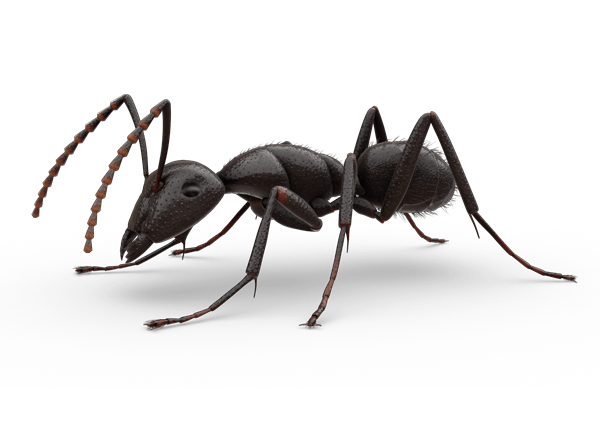SIZE: Carpenter Ants range from 3.4 mm to 13 mm long making them the largest ants in Canada.
DESCRIPTION: A carpenter ants color varies from black (being the most common), brown, red and light brown depending on the species. Carpenter ants have a rounded thorax with large mandibles.
BEHAVIOR: Carpenter ants not only feed on foods but also other insects. Carpenter ants tend to favor sweet honeydew produced by plant-feeding insects, such as aphids, scales and mealybugs. In springtime, mature colonies produce winged reproductive ants that are known as swarmers which fly out to start new colonies. These swarms can be seen within homes at night. Where can carpenter ants be found? Carpenter ants essentially dig holes in wood in order to nest ultimately weakening the wood from the inside which can lead to long-term damage to your home.
In order to identify the ants, begin by looking for any trails. Ants rarely travel alone and are usually spotted when they’re hunting as a colony along paths that they have established. Once you’ve found a trail, notice the sizes of the ants. Are they identical or do they vary in size?

Also it is important to observe when the ants are active—during the day or at night? At the end of the trails keep an eye open for nests, once the nest has been identified and the species of the ants it will result in a much more successful treatment.